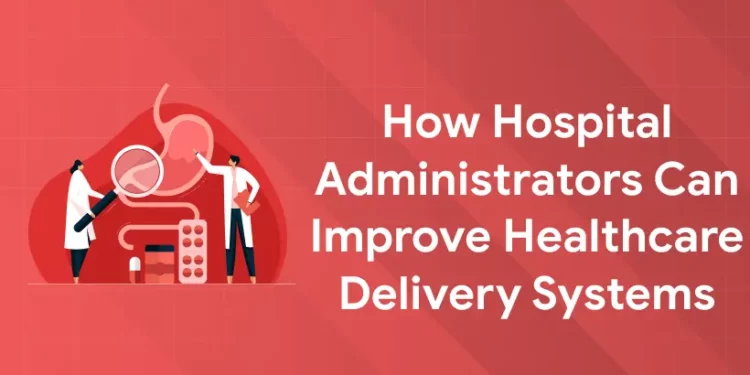Table of Contents
Healthcare administrators are important to the efficient running of medical facilities and the provision of high-quality patient care in the modern healthcare environment. These individuals oversee everyday operations, handle budgets, and make sure that healthcare rules are followed. They are the backbone of hospital management. By bridging the gap between organisational policy and clinical staff, healthcare administrators make strategic decisions that impact staff well-being and patient results.
Join Entri’s Hospital and Healthcare Administrator Course
What Exactly is Healthcare Administration? Role of Healthcare Administrators
So, what exactly does a healthcare administrator do? Healthcare administrators play a critical role in turning healthcare policies and innovations into efficient services that suit the needs of both patients and staff. They organise the financial administration, scheduling, and compliance tasks that are essential to the effective provision of healthcare. Facilities must be able to quickly adjust to evolving healthcare regulations, technological advancements, and patient expectations in order to continue operating and meeting the health requirements of the community. Healthcare administrators oversee everything from electronic health records to human resources to make sure that healthcare institutions are set up to provide high-quality care.
How Can Administrators of Hospitals Provide Better Care?
1: What is the primary role of a hospital administrator?
Healthcare administrators can more successfully lead their organisations to provide high-quality treatment while managing the intricacies of the healthcare environment by possessing the following competences.
Communication and Interpersonal Skills
Administrators with strong communication and interpersonal skills can clearly communicate complicated healthcare rules and procedures to their teams while also ensuring seamless operations. In a healthcare context, these abilities are crucial for upholding transparency and providing justification for decisions.
Setting Clear Guidelines
Establishing precise policies is one of a healthcare administrator’s duties in order to improve patient outcomes. These recommendations will address anything from minimising hospital-acquired infections (HIAs) to interacting with a patient’s relatives. Recall to have good communication with the personnel and give them the freedom to ask direct questions in order to dispel any misunderstandings. These guidelines can help everyone understand how to do essential tasks related to patient-centered care, such as comfort, advocacy, and patient education.
Collecting Data Properly
Patient outcomes must be measured through data collection and analysis in order to be managed. You’ll be able to identify the areas that need to be improved in order to provide better treatment. With the advent of electronic health records, administrators may now provide treatment that is more patient-centered. Tracking and monitoring your patients should be your top priority, even though many institutions place more emphasis on improving billing and revenue creation. Utilise patient satisfaction questionnaires to improve the calibre of your offerings.
Reducing Hospital Readmissions
Administrators should set up procedures to get rid of issues that could lead to re-hospitalization in an effort to lower readmission rates. If residents are followed up with after discharge, readmissions can be avoided. Occasionally, unrelated conditions cause patients to be readmitted within a month of being discharged. In order to assess the risk, your personnel should be aware with the medical history of the patient.
Begin your journey towards a successful career in healthcare administration
Setting and Achieving Goals
What kinds of results are you hoping these tactics would produce? Prior to making any adjustments, some precise, quantifiable, and definite goals must be established. Later on, you can monitor these objectives to determine how far you’ve come!
Administrators can use these features to determine what goals they can set in a medical setting:
- Minimise patient harms caused by therapy alternatives.
- Increase your reliance on efficient care delivery.
- Recognise that the patient ought to be the focal point of the provision of care.
- Minimise waiting times for carers as well as patients.
- Cut down on waste as much as you can.
- Maintain equity in healthcare.
Improving Patient Engagement
Since patients are self-advocates, it is challenging to improve results without their involvement! Thus, administrators in the healthcare industry should look for cautious ways to improve a patient’s engagement. Additionally, you can support patients and their families in effectively communicating with doctors, nurses, and other primary carers. Improve your ability to actively listen in order to comprehend a patient’s concerns. Patients might become more involved in their therapies in this way.
Giving Staff Recognition
Providing incentives can encourage your staff to take greater care when making decisions regarding patient outcomes. Establishing a “reward system” can increase worker engagement because it immediately affects the quality of care they provide. By raising employee morale with these “perks,” managers may more successfully accomplish their objectives and give patients the care they need to heal quickly. When you give your subordinates immediate acknowledgment, it motivates them to put in more effort. Research indicates that the primary factor behind improving an individual’s performance is “employee recognition.” Therefore, it would be beneficial if you remembered to commend RNs who actively engage in patient advocacy, education, and comfort.
Understanding of Healthcare Laws and Ethics
In addition, a comprehensive understanding of healthcare laws and ethics is non-negotiable. Healthcare administrators must navigate the intricate web of local, state, and federal regulations to maintain compliance and uphold the highest standards of ethical practice. This legal and ethical acumen is not only about adhering to the law but also about fostering an environment of trust and safety for patients and staff alike.
Conclusion:
These easy techniques include conducting patient surveys and appropriately tracking discharges. In order to sustain employees’ productivity, make sure that your personnel continues to receive proper training while avoiding overworking them. Remember to have great patient communication to comprehend their problems. Making the rounds can also assist you in addressing a patient’s concerns and enhancing hospital care delivery.
Join Entri’s Hospital and Healthcare Administrator Course
Hospital Administration Course with Assured Career Growth
Hospital Administration Course by Entri App: Master essential healthcare management skills, gain certification, and secure top roles in leading hospitals
Join Now!Frequently Asked Questions
How can we improve the present health care system in India?
A Few Efforts to Enhance Medical Care
- An appropriate physical setting
- Health professionals who are driven and well-trained.
- Keep your focus on the patients.
- Developing infrastructure
- Decentralising public health services
- Increasing the ratio of doctors to population.
- Increasing the quantity of hospitals and medical colleges.
What is the role of hospital administrator?
Direct, supervise, and assess the work of medical, nursing, technical, clerical, service, maintenance, and other employees.
What is the scope of hospital administration in India?
Graduates of the Hospital Administration MBA programme find employment in non-profit organisations, clinical research labs, hospitals, insurance, diagnostics, information technology, medical equipment, and consulting.
Is hospital administration a good career in India?
The healthcare sector creates the most jobs in India.













